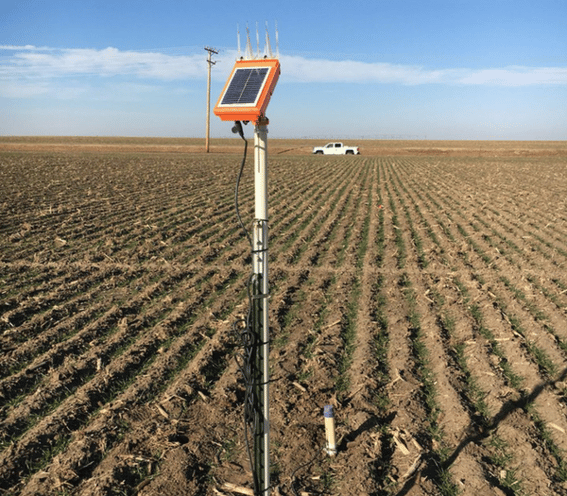In California, water scarcity issues are becoming more frequent and more severe. To contend with resource constraints while staying profitable, many growers are keen to develop or expand a precision irrigation strategy—applying limited water strategically, where it's needed the most.
But for farm managers already stretched thin, the time required to install new equipment and negotiate with multiple vendors can make it difficult to get started. That's why Ceres Imaging is expanding our precision irrigation service in California to include soil moisture probes.
Customers can choose to purchase AquaSpy® 48" soil moisture probes—including humidity, temperature, and water pressure sensors—directly from Ceres Imaging. Because the exact site of in-field sensors heavily influences their value for day-to-day decision-making on the farm, we'll use our industry-leading aerial data to recommend the appropriate number of probes and the best locations.
We'll also install the probes, monitor their performance, and perform any needed repairs and maintenance within four days. Ceres Imaging's dedicated customer support team will be on hand throughout the season to help growers interpret and use their probe data in the field.

“While we now integrate with most leading in-field sensor brands, we believe there is a sizable segment of growers who want more than just data integrations. By offering a complete end-to-end sensor solution, Ceres is making purchasing and getting value from in-field sensors easy,” says Ceres Imaging CEO and founder Ashwin Madgavkar.
AquaSpy CEO Bruce Moeller sees significant value for growers in using aerial and in-field data together. “Especially when water is scarce, getting the full picture is critical for better irrigation decisions. We think bringing together the above-ground and below-ground perspective will help growers take action with confidence."
Importantly for those who have limited time and resources to spend managing farm technology, customers can view their probe data within the Ceres Imaging app, alongside their aerial imagery.
Apart from reducing the time spent swapping between different management tools, the ability to see data from both sources together, in context, makes it easier to recognize patterns and abnormalities in crop performance. That in turn helps busy growers solve irrigation problems more quickly, make the best use of limited water resources, and uncover opportunities to improve uniformity.
For more information, or for help launching a precision irrigation program on your farm, contact us.Industry trends Irrigation Precision agriculture Company news
